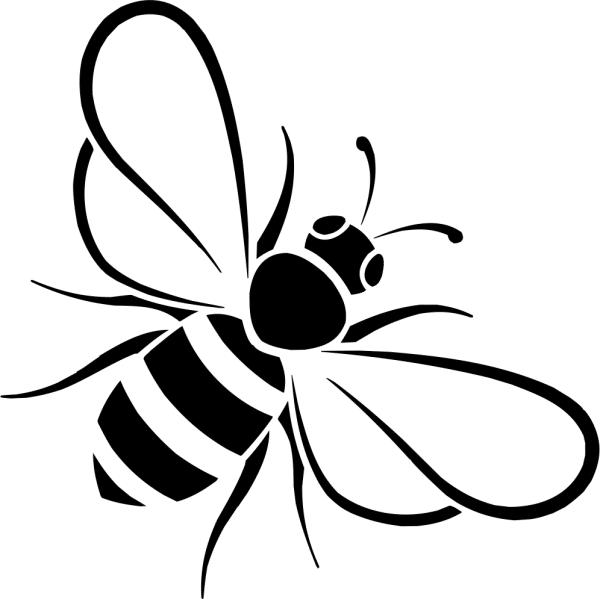Hi, my name is Annie and I’m a bee fanatic. 🙂 (Ok, I’m actually a pollinator and beneficial insects fan, but this project’s focus is on honeybees.)
I’d like to build some beehives and place them in locations where the bees will be safe from toxicants (human-made toxins: insecticides, herbicides, chemical fertilizers, etc.) and have access to excellent forage throughout the spring, summer, and fall. I’ll maintain the hives in a treatment-free manner, which means I won’t use any toxins or toxicants (which accumulate in the honey and wax) in order to try to kill parasites and diseases, and I won’t interfere with the natural rhythm of the colony. Instead, I’ll work on supporting strong, healthy bees that can take care of themselves. I’ll start doing that by catching feral swarms of honeybees in the area, as they’re strong enough to have already survived one or more of our brutal winters.
I have locations to place several hives already, and am always open to building and placing more. The cost of materials for each hive is roughly $450 (a savings of about $400-$600 per hive over buying them). The purpose of this crowdfunding project is to raise the money to purchase those materials so I can build the hives as a way to help offset some of the effects of the largely human-made disasters that are modern conventional beekeeping, colony collapse disorder, and climate change.
It’s no secret that a large part of our food supply depends on pollinators, even those non-native to North America, like honeybees. Honeybees have been naturalized here for over four hundred years and we depend upon them for their honey and wax, as well as their pollination services. It’s incumbent upon us to help provide them with toxin-free living spaces to help them survive in a world that seems determined to make it as hard as possible.
Project goals
Main goal: $2,000 to buy supplies (wood, screws, locally sourced wool for insulation, etc.) to build four Warré hives of four boxes each.
Stretch goal #1: +$200 ($2,200 total) purchases one of the major tools needed to process honey and wax, which I will need by year two: a stainless steel fruit press to crush the honeycomb and extract the honey.
Stretch goal #2: +$450 ($2,650 total) purchases the second of two major tools needed to process honey and wax, which I will need by year two: a stainless steel solar wax melter to process wax.
Stretch goal #3: Any pledges not going towards building a hive or buying the two big tools I don’t already have will go towards covering gas, time, and tools needed to pick up swarms of locally adapted bees from a fifty mile radius around Watertown, rather than paying upwards of $150 or more towards importing bees from milder climes that won’t survive their first winter here anyway.
What kind of hives are you going to build? What is your beekeeping philosophy?
I’m going to build modified[1] Warré hives. From the research I’ve done and the practical experience I have, it’s the one that best mimics the honeybees’ preferred home (thick-walled, hollow tree trunks they can build comb in from the top down) while being simple for a beekeeper to make and maintain. The very hands-off beekeeping philosophy I prefer goes along with the hive style, too: rarely if ever opening the hive; letting the bees build their own honeycomb; letting the bees build their comb from the top down; and using no toxins/toxicants in the hive to treat it, which allows natural selection to weed out the weak colonies and supports the strong ones. I’ll make a much longer post about the details later about why I’m choosing to keep my hives in this manner, but that’s the gist.
[1] The modification I’ll be trying will be to incorporate local wool[2] (inside waxed duck or canvas, like oilskin dusters) around the boxes as year-round insulation for the hives, given that the climate in South Dakota is much more extreme than in France (where this hive style was originally designed and used) and it’s getting more so every day. (We’re not the only ones who don’t handle polar vortex weather extremes well. Much of the colony die-off in the last few years was caused by faster and more extreme temperature swings–some as drastic as an eighty-degree difference in one day! Adding insulation will help with that, making it easier for the bees to keep the temperature inside the hive steady in both summer and winter.)
[2] Are you raising local grass-fed, grass-finished sheep or lambs? Need someone to take fleece off your hands that aren’t suitable for other purposes (e.g., fiber)? We should talk! Please drop me a note. 🙂
I’d like to host a hive on my property!
Do you garden or farm without toxicants (insecticides, herbicides, synthetic fertilizers)? Are you fairly well-protected from chemical drift from conventional farming? Do you have forage (blooming plants that produce nectar and pollen) available spring, summer, and fall? I’d love to place a hive at your location. Please drop me a note. 🙂
Please note
All crowdfunding levels are potentially subject to sales tax, because you’re receiving something in return, and whether or not you will be required to pay tax will depend on your location.


Reviews
There are no reviews yet.